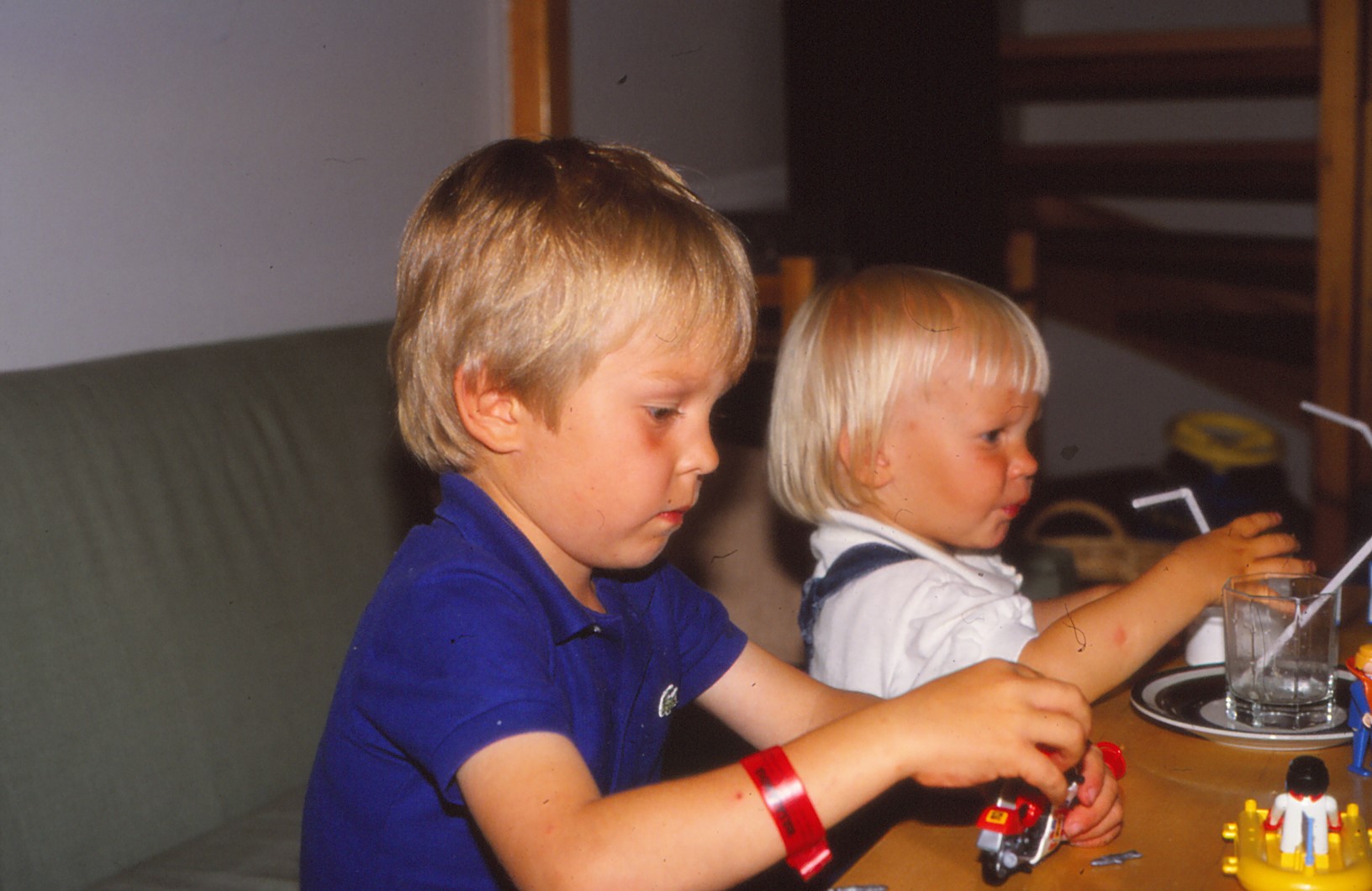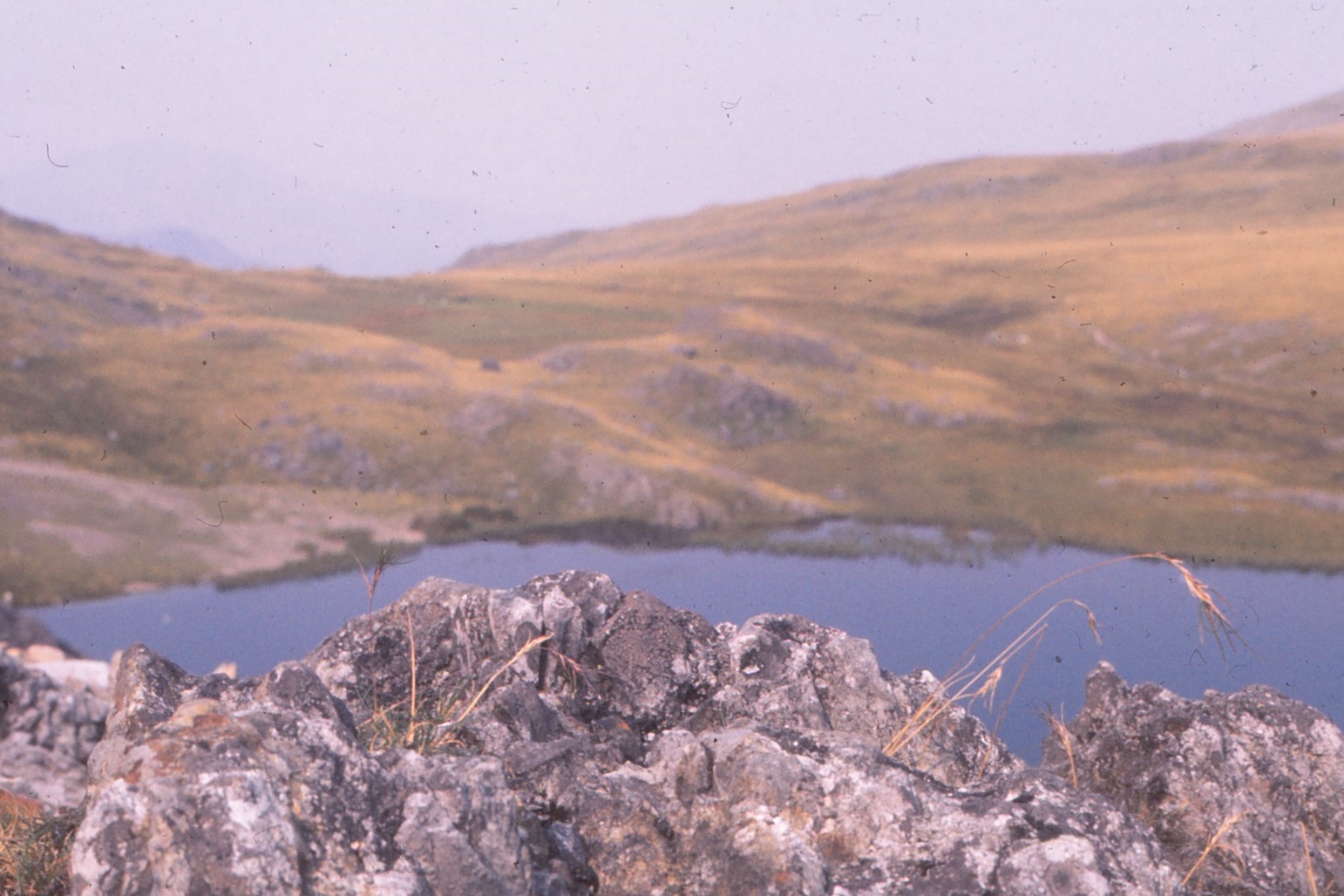Degrowth - improved quality of life and climate actionKeskiviikko 22.1.2020 klo 14.20 Going back to the golden past is the major goal of populism everywhere. This is the case even though it is clear that most things are better now than they were 50 years ago. In the face of improved gender equality, it is superficially quite surprising that many women in Europe and North America are attracted to the backward-looking populism. However, maybe it is not surprising at all: the goal of the present economy is to grow. This can be achieved only by increasing the efficiency, which usually means that less people are doing more work. The present society can in short be described as “the society in a hurry”. People are required to be busy ants. No wonder people would want to return to the golden, less busy past. That should actually also be the goal of climate actions. So, in a way the major populistic goal and the climate action goal are the same. The way to achieve this is degrowth. We do not need the possibility of consuming more, when the extra consumption requires busier working hours. Notably, if being busy would help making new innovations, th The economic theories should change from those of growth economy to those of degrowth economy. Instead of measuring the gross national product (GNP), one should measure indicators of human well-being. Among these indicators, the feeling of being in too much of hurry would be a strong negative one. In virtually all working place surveys being in less hurry is even more important positive feature in the work than getting higher salary. With degrowth, the energy consumption would decrease, whereby the use of fossil fuels would decrease faster than presently estimated. Thus, the populists wanting to get back to the golden past should join the people combatting climate change, because the degrowth needed for combatting climate change is required for being able to be less busy at work wanted by populists – and other people. |
|
Kommentoi kirjoitusta. Avainsanat: climate change, economic growth, populism |
From Concrete to Wood in Building: Combatting Climate ChangeKeskiviikko 18.12.2019 klo 14.53 - Mikko Nikinmaa Another indication of the climate change is the observation that Australia experienced the hottest day ever. Despite this and a multitude of other signs, the backward-looking politicians like the Australian prime minister thwart any actions to combat climate change. President Trump lists as one of his major achievements “cancellation of the unfair and costly Paris Climate Agreement”. The discussion about climate change has concentrated on coal and oil use in energy production and on eating meat. Also flying and rain forests have attracted much media attention. It is seldom mentioned that the size of the human popul Thus, one should stop building using concrete and steel. Most of the carbon dioxide emissions are due to cement production, an indispensable component of concrete. Making brick or stone houses would already be much better than concrete. However, the pest alternative would be wooden houses. Technologies are already available, which enable building multi-store houses. Further, the probability of burning of wooden houses is much reduced from 19th century, when whole cities could burn. In a wooden house the carbon would be stored for its entire life length, up to several hundred years. Thus, if all new buildings were wood-based, the carbon footprint of building sector would decrease for 10 % of world total to 0. This would be a huge win in combatting climate change, and could be reached with the presently available techniques. In view of this, one must ask: why is it not done? |
|
Kommentoi kirjoitusta. Avainsanat: carbon footprint, population growth, Paris Climate Agreement, temperature |
Black Friday - An Overconsumption Feast Directly Opposite to What Should Be Done to Combat Climate ChangePerjantai 29.11.2019 klo 11.15 - Mikko Nikinmaa It started in America as many workplaces have free day after Thanksgiving. The commerce realized that this could be the time to get people in department stores and other shops. In recent years Black Friday has invaded Europe. This happens at Let’s face it: Black Friday represents all the problems in the overconsuming Western world. Its purpose is not to get people to buy things that they need but to buy things because they are sold at rebate, regardless if they are needed or not. The only purpose is to increase sales – and this happens in the world where European countries and America have used their yearly quota of resources before midsummer. In view of this, Black Friday represents the most blatant action against the possibility to combat climate change, and against the possibility to give a habitable earth to our grandchildren. Today I buy nothing. |
|
Kommentoi kirjoitusta. Avainsanat: consumption, economic growth, sustainabilit |
World Scientists' Warning of a Climate EmergencyTiistai 26.11.2019 klo 12.40 - Mikko Nikinmaa Among the 11000 other scientists, I was among the signatories in the article authored by William Ripple et al. It was published in BioScience in early November, and attracted pronounced media coverage. Since the article is open access, here is a link to the published paper. Please, read it (and if you know anybody who doubts anthroponic effects on climate, get them to read it): https://doi.org/10.1093/biosci/biz088 |
|
Kommentoi kirjoitusta. Avainsanat: climate chhange, population growth, fossil fuels, biodiversity |
One Earth - Multidisciplinary Journals Emphasize the Earth's LimitsMaanantai 4.11.2019 klo 18.13 - Mikko Nikinmaa It is increasingly becoming apparent that the Earth has limits, as warned by scientists already in the 1970’s. The Club of Rome gave out the report Limits to Growth in 1974. Even before that the worries about the impact of increasing human population had been expressed (Paul R. Ehrlich, Population Bomb, 1968). However, marked media attention of the limits of the Earth has first been gained in the last couple of years because of climate change. The scientific world is now having new multidisciplinary journals. Cell Press (Elsevier) has started the journal One Earth, which in the editorial of inaugural issue says the following: “Climate change is not the only grand challenge we face. Springer-Nature has plans of starting a similar journal. Common to the new initiatives is that they see the need to combine humanistic, social and economic studies to what has earlier only been the mandate of environmental scientists. There is, indeed, a huge need for this, as the outset of economic theories and politics is continuation of growth. To change the outset to sustainability in the world with limits is needed, if we want to have a peaceful and orderly change to sustainable life. All too often one hears that “there are many opinions about climate change”, even though virtually all scientists studying climate-related phenomena agree on the topic. The different opinions are often those of people, who are focussing on one question they are familiar with, without noticing that the uncertainties caused by the phenomenon have been taken into account in the climate research. What is really worrying is that many of the problems have been known by fossil fuel industry for decades, but have been hidden in order to make big profits. Regardless, even if there were no climate change, the planet has limits, and the other challenges mentioned above remain. What has long remained within the circles of environmental scientists, should now be discussed and implemented in economic theories and politics. Hopefully the multidisciplinary journals will be read by humanistic, social and economic scientists, and politicians. There are still possibilities to change attitudes from growth to sustainability, but it cannot be done without political and economic leaders. |
|
Kommentoi kirjoitusta. Avainsanat: climate change, environmental pollution, sustainabbility, growth |
Overuse of the Earth is the Problem: Climate Change is just a SymptomPerjantai 1.11.2019 klo 18.38 - Mikko Nikinmaa Climate change is a question that has filled the media because of its potential effects on all aspects of life on the Earth. In the coverage of climate change, it has become THE PROBLEM. If we can solve it, life can continue with small disturbances. In view of this, different technological solutions to combat carbon dioxide increase have been offered. Mainly they concentrate on stopping the use of fossil fuels, changing the food preferences, removing carbon dioxide from the air and stopping overconsumption. The good ne The bad news is that even if the presently gravest symptom of Earth’s overuse, the climate change, can be stopped as a result of technological advancements, that does not stop the real problem: the overuse of Earth. There are two major components of this, population growth and consumption growth. Population growth demands more food production, and the increasing population in the presently poor areas will want to improve their living standards closer to, e.g., Europe. However, the food production with present agricultural methods has decreased the fertile soil by 50-70 %. Also, the present type of food production requires insecticides, herbicides and other pesticides, and artificial fertilizers. Already with the present population the pesticide use causes decrease of beneficial insect populations, which are required for the growth of berries, fruits and many oil-producing plants. So one would need to revert to environmentally friendly agricultural production. The problem is that consequently the production will decrease and will be unable to feed the presently increasing population. Because the fertility of land decreases, also new areas need to be taken to agriculture. This is difficult, since most of arable land is already in use. The increasing population also needs more space, and consequently habitation takes agricultural land and forest. As a result biodiversity decreases. With regard to consumption, it is difficult to decrease environmental pollution even if recycling and water treatment technologies are effective. There are always people, who do not follow good practises, and developing areas do not see the treatment of wastes and water purification as priorities. Consequently, environmental pollution continues to increase throughout the world. Both aquatic and terrestrial organisms will be affected. Thus, one can say that even if there were no climate change, other drastic symptoms of Earth’s overuse would be in the news. The basic problem is that limitless growth is the basis of economy in a planet which clearly has limits. |
|
Kommentoi kirjoitusta. Avainsanat: biodiversity, environmental pollution, population growth, agriculture |
Good News - the Number of Children in the World Is DecreasingLauantai 5.10.2019 klo 16.18 - Mikko Nikinmaa First, I need to point out that I like children, and the future of mankind depends on an adequate number of children. However, population growth is the root of all environmental and climate problems we have. It was quite shocking to see, for example, a picture where world population change and change of energy consumption were both included. The two figures could have been superimposed. This is because during recent years the energy consumption in areas with high energy use has decreased, but in developing countries every additional person increases the (per person small) energy consumption. In view of this, the recent report that the number of children has decreased in every part of the world is really something positive. This opinion is opposite to the worry that the proponents of continuous growth preach. According to them the population needs to grow in order to guarantee future well-being. However, isn’t the outset behind limitless growth untenable? For continuing until eternity, it would require that there are no limits in the earth’s resources. The climate change, environmental pollution, erosion and decrease of suitable agricultural land, overfishing, and biodiversity loss all indicate that we have reached the limits of the earth. Since it is largely caused by increasing human population, any decrease and even stop of population growth is welcome. It is even more welcome that population is starting to shrink in industri In view of the above considerations we need to start thinking in global (environmental) terms. Putting walls between nations and thinking nationalistically is the worst we can do – since none of the environmental problems and their consequences follow national boundaries. It is further important to note that even if population growth already decreases, without additional measures the world population increases another hundred years. Because of this, the two measures which are the most effective means of decreasing birth rate, improving education and women’s status, should be in the centre of any developmental aid. One cannot and must not accept patriarchal aspects of culture: people should be treated equal regardless of their gender, colour, ethnicity or disability. |
|
Kommentoi kirjoitusta. Avainsanat: population growth, resource use, climate change |
World Scientists' Warning on Climate EmergencyTorstai 1.8.2019 klo 10.38 - William J. Ripple et al.
This is not written by me, but the real writers wanted it to be shared as widely as possible Mikko Nikinmaa
World Scientists’ Warning of a Climate Emergency (Condensed Version) William J. Ripple, Christopher Wolf, Thomas M. Newsome, xxxx scientist signatories from xxx countries We scientists have a moral obligation to clearly warn humanity of any great existential threat. In this paper, we present a suite of graphical vital signs of climate change over the last 40 years. Results show greenhouse gas emissions are still rising, with increasingly damaging effects. With few exceptions, we are largely failing to address this predicament. The climate crisis has arrived and is accelerating faster than many scientists expected. It is more severe than anticipated, threatening natural ecosystems and the fate of humanity. We suggest six critical and interrelated steps that governments and the rest of humanity can take to lessen the worst effects of climate change, covering 1) Energy, 2) Short-lived pollutants, 3) Nature, 4) Food, 5) Economy, and 6) Population. Mitigating and adapting to climate change entails transformations in the ways we govern, manage, feed, and fulfill material and energy requirements. We are encouraged by a recent global surge of concern. Governmental bodies are making climate emergency declarations. The Pope issued an encyclical on climate change. Schoolchildren are striking. Ecocide lawsuits are proceeding in the courts. Grassroots citizen movements are demanding change. As scientists, we urge widespread use of our vital signs and anticipate that graphical indicators will better allow policymakers and the public to understand the magnitude of this crisis, track progress, and realign priorities to alleviate climate change. The good news is that such transformative change, with social and ecological justice, promises greater human wellbeing in the long-run than business as usual. We believe that prospects will be greatest if policy makers and the rest of humanity promptly respond to our warning and declaration of a climate emergency, and act to sustain life on planet Earth, our only home.
William J. Ripple email: scientistswarning@oregonstate.edu |
|
Kommentoi kirjoitusta. Avainsanat: climate change, environmental economics, population growth |
Overshoot and Collapse or Constraints and SustainabilityPerjantai 21.6.2019 klo 13.59 - Mikko Nikinmaa Although many different signals such as climate change, biodiversity loss, environmental pollution and decrease in land fertility, as indicated in the scientists’ warning (http://www.scientistswarning.org), show that we utilize the planet more than its resources allow, a surprisingly large percentage of mankind thinks that nothing needs to be done. One reason for this could be lack of information and schooling, but the attitude is quite common even among people, who could easily assimilate the available information. One reason for thinking that no actions are needed is denying that anything happens, the second is relying on that market forces and technological advancements will solve any problems. Coupled with denying is often spreading false information, and quite often the nationalistic populistic agenda is associated with denying that there are limits to the earth. With nationalistic agenda one may think that the following actions help one’s own nation: building high chimneys so that any air pollution goes further away, shipping toxic wastes to faraway places, as from Europe to India, overfishing claiming that the overuse of the resource is needed for keeping jobs, compensating for failing land productivity by using more fertilizers, subsidizing production so that rising prices do not indicate increasing scarcity of resources, using or threating to use military force to keep one’s own resources secure including means to keep unwanted foreigners out etc. The production by one’s own industry is invariably considered to be environmentally friendlier than that by industry of other nations. A form of denying that nothing needs to be done is blind faith to technological solutions. For example, with regard to climate change, the newscasts are almost daily reporting different ways of removing carbon dioxide from the atmosphere. However, although the technological advancements will be important for sustainable future, they cannot do anything but postpone the collapse if our ways do not cha The growth ideology is based on thinking that no limits exist. Since the limits have clearly been reached, there is a grave need to change to thinking that we have enough. However, although stationary state is necessary for sustainability, it is very hard to achieve, because it places great demands to our morality. One can see this in the way that any attempts to built societies based on equality have failed. But to achieve sustainability both population growth and the concept of economic growth need to be stopped and changed. Doing one is not enough. Stopping population growth will not generate new resources; as technological advancements and recycling, it only postpones the collapse if we do not accept that the concept of economic growth has to be replaced with no-growth ideology. In the scenario requiring economic growth, even if population growth stops, the stable population will use more and more resources yearly with collapse as the end result. Thus, we need to replace economic growth with economic stationarity. This makes it possible, together with stationary population and technological advances, to decrease the ecological footprint of the human population to sustainable level. I cannot understand why it is all the time said by the people denying the need to do anything that the environmental movement and climate change activists only generate fear without giving solutions, when virtually all the comments with environmental concern give them. The only thing is that the solutions given require a drastic change in economic thinking. But that is what is needed. And let’s face it, the GNPs of 1960’s were quite adequate for decent life. In fact, the nationalistic populists often think of that time as the golden age in all other aspects. If one did not require growth, the investments needed for it could be used, e.g., for taking care of elderly, children and sick. In many ways a stationary, sustainable society could be more humane than the present growth-based society. And since it would also be sustainable, why cannot political and economic leaders accept that this kind of structural change, revolution, would be needed to secure the well-being of mankind.
|
|
Kommentoi kirjoitusta. Avainsanat: climate change, economic growth, sustainability |
Our PlanetLauantai 11.5.2019 klo 18.35 - Mikko Nikinmaa The Our Planet documentary series by David Attenborough in Netflix (www.ourplanet.com) is incredibly good, and will probably be the most popular pro-environment series that has recently been published. When watching it a couple of things must be remembered. Although climate change is of a huge concern, the short-term solutions alleviating it will not solve the basic problem, which is our overuse of the planet. Climate change is just one symptom stemming from the facts that there are too many people who are overusing Earth's resources. In November 2, 2018 I wrote a blog, where pictures of human population change and the increase of world's carbon dioxide were side by side. And they could be superimposed. Further, although it could be possible to severe the link between human population and carbon dioxide production in the short term, the vicious circle between population growth, resource overuse, pollution and climate change still exists in longer term because of the following. Human population needs to be fed. The intensive agriculture with artificial fertilization and pesticide use has increased the agricultural production per hectare to 5-10 times the crops obtained before "industrial" agriculture. It has been estimated that without the use if artificial fertilization and pesticides the maximal size of human population would be 2-3 billion. However, Nature presently strikes back. Fertilization pollutes our waters, pesticides kill pollinators and the microalgae of the seas. The results arte that aquatic pollution is decreasing the ability of algae to photosynthetize. The aquatic algae have contributed to 50 of the carbon dioxide sinks of the world. Now it is estimated that carbon dioxide fixation by them has decreased by 20 %. Aquatic pollution thus drives climate change. Pollinating insects die as a result of insecticide use. Since about 2/3 of all the food plants need pollination by insects, this as such reduces the possibilities of increasing agricu Apart from cutting rainforests, the most pronounced biodiversity losses are caused by overfishing. Most fisheries at the moment are unsustainable, and aquaculture does not help the situation, as most of the fish feed is made from fish. So, the only change that happens is that for human food less preferred species are caught. An additional problem with aquaculture is the use of antibiotics and pesticides, which affect marine life and be one component of generating antibiotic resistance in the environment. Besides the decrease of marine biodiversity, especially the large amount of plastic waste in the oceans is an anthropogenic problem. Here an important step forward was taken a day or two ago, whem most countries in the world agreed that plastic waste may not be exported. This will generate national recycling of plastics. Notably, Trump's USA did not sign the agreement. The present government of the USA has been very consequent in the anti-environment actions, opposing any actions which could be seen as trying to improve the state of environment. The US government after Trump will have much to do to reverse the anti-environmental actions of the present government. If it weren't for plastics, it is likely that there would be other tash all over the place. Different materials, which could be recycled are just thrown away. For example, much of the metals could be reused which would much reduce the need for mining and theeby overuse of world's resources. In conclusion, we would need to find ways both to decrease the human population and the amount of energy and resources used by a unit human. Changes in the first pertain especially to developing countries and in the second to inhabitants of traditional industrialized countries. One cannot think in terms "we will do nothing unless the others do their share", because that is a certain way to go to catastroph. |
|
Kommentoi kirjoitusta. Avainsanat: biodiversity, climate change, environmental pollution, economic growth, sustainability |
We don't have a plan BSunnuntai 24.3.2019 klo 19.49 - Mikko Nikinmaa We need to live in this planet. There is no alternative universe, where we can jump to if we overuse the resources of Earth. Although climate change is the single topic that has caught general attention, it is no more than a symptom of the general sickness of Gaia. There are several other symptoms that will also unattended make life problematic. In all of this, the major problem is that the decision makers were young in the world that didn't have any of the environmental problems, which the teenagers today are faced with. A week ago schoolchildren around the world demonstrated against climate change. Not surprisingly a lot of people in my generation said that they are just taking time off school. Their thinking is not idealistic or important. - People completely forget when saying this that when we were young, we demonstrated against Vietnam War, were worried about population growth and chained ourselves to dredging machines, which were spoiling lakes for economical land use. In fact, many of the problems associated with climate change would not be acute, if we had, in addition to demonstrating, used our working life to solve the environmental questions. The major problems are the large world population, and the very uneven distribution of wealth in the world. Together these generate much of the refugee problem, which cannot be solved by closing our borders, building walls, and decreasing foreign aid. On the contrary, increasing foreign aid is the only possible solution. People would not move to rich countries, if life in their living place were tolarable. Also, schooling of women is by far the most effective way of decreasing population growth. Further, we in the rich North lived quite happily 50 years ago, when our standard of living was only a fraction of what it is today. This partial solution requires that we, the generation in power, stop thinking in the old ways, and admit that one has to do things that cost. We cannot keep taking from our children's well-being to be able to go towards a crash in first class. |
|
Kommentoi kirjoitusta. Avainsanat: climate change, resource utilization, biodiversity, population growth |
Gaia is sick: It is not only Climate ChangeLauantai 22.12.2018 klo 13.35 - Mikko Nikinmaa Gaia hypothesis was generated in 1970's by chemist James Lovelock (and co-developed by microbiologist Lynn Margulis). It states that organisms interact with their inorganic environment so that the Earth is a complex self-regulating system, where chemical, physical and biological components all affect the state of Gaia (=Earth). In the early 1990's there was a computer game simulating the development of Gaia. Gaia concept is very fitting to climate change, b With regard to land use, large population needs space for housing and food production. This results in cutting forests, and both decreases carbon dioxide utilization worsening climate change and causes biodiversity loss. It is notable that organic farming is actually a bigger problem than modern agriculture, since the same amount of food production requires larger area whereby carbon dioxide sink is reduced as more forest needs to be cut. (It is clear that plants used for food production also take up some carbon dioxide, but the amount is smaller than for trees). Land use also includes mines and such like. Much of metal mining could be stopped, if all metals were recirculated. Increased food production is necessarily causing biodiversity loss. It is, for example, thought that overfishing will increasingly result in a decrease in a number of marine species. Largely fisheries-induced biodiversity loss could be decreased by aquaculture. Notably, aquaculture decreases biodiversity loss only if their feed is not fishflour, i.e. fish are not caught to get fodder. One way of increasing land area for food production is to replace cotton fibre with wood fibre and another is to decrease meat use (and thereby production). The waste collection and recycling of materials can be improved and environmental pollution decreased by effective wastewater treatment plants. However, regardless of what is done, the problems become more difficult to solve with increasing human population. So, Gaia is sick, and the best remedy would be to be able to decrease human population, or since this is not likely to be achieved, at least stop population growth. To be able to do this an important component would be improving women's status and schooling. Also, a major shift in ideology is required - growth ideology must be scrapped. |
|
Kommentoi kirjoitusta. Avainsanat: land use, population increase, growth, energy production |
G20 and climate changeSunnuntai 2.12.2018 klo 12.55 - Mikko Nikinmaa Invariably, older people are looking in the golden past - how things were good then. This is actually the breeding ground for the populism of today: none of today's threats existed in1960's. However, the gross natioal products of all the rich countries were only a fraction of what they are now, and many things everyone of us now take for granted were extremely rare. The book "Limits to Growth" was published in 1972. The book introduced the idea that there would in future be limitation for many needed resources. At the time, virtually all economists rejected the idea, and the continued thinking that economic growth is needed is still prevalent, although all the calculations and exrtapolations indicate that Earth's limits It is notable that economy and climate change actions are kept strictly separate, although the truth is that economy depends on environment. And even more, the sad truth is that the growth economy isn't possible if we want to have an Earth that is habitable for future generations. So, instead of trying to calculate, how much economic growth is decreased by climate actions, the outset should be: how much should the world's economies (and population) need to be reduced in order to have sustainability. The new economic thinking, based on sustainability of natural capital, should be the major direction that economics goes into. We have reached the limits to growth about twenty years ago, and the future requires completely new way of thinking, which has little to do with the economic theories of growth economy. If the choice were made clear by governments and media that the choice is between a balanced diminishing of economies - back to 1960's - or a catastrophe, I am pretty sure that people would choose the first alternative. As has been said by many climate scientists, the question is not that we would not have the solutions to solve the problem, but that solving it requires the change of attitudes. In short, all the media should start praising the situation that is taking place in many developed countries today, the population has stopped growing. Further, the media and governents should start campaigns in developed countries to say thet our material well-being could easily go back 50 years without much disturbing our daily life. Since the problem iss not that we would lack solutions to combat climate change, to save the planet we would need to scrap the attitudes pertaining to growth economy - the need for population and economic growth. |
|
Kommentoi kirjoitusta. Avainsanat: economic growth, population, Paris agreement |
Growth - threat to EarthLauantai 10.11.2018 klo 11.17 Reading the news, two problems are invariably brought forward: population growth in Japan and Europe have completely stopped and economic growth is again slowing down. These are given as negative news, although at the same time the news bring forward that this year the day that the resources of the world that could be used per year if sustainability were the aim was reached earlier than ever. Consequently, both news items about the stop of population growth and and decrease of economic growth are positive news for the Earth, hopefully more of them follow. As a need for economic growth, it is invariably said that if economic growth does not continue, one cannot continue with the present benefits - but wait a minute, those if us who lived in 1970s lived quite happily then, even though all the economic indicators were much worse than today .- the gross national product was only a fraction of today's and there are many things all of us consume now, which were not needed then: and honestly, do we really need them. As a need for population growth it is usually said that without it there is not enough working force to pay pensions to retired people (and jobless atc.). Again, wait a minute, at the moment immigration is the most negatively thought-about aspect of life in Europe. Wouldn't it be actually right to welcome immigrants and say that they are needed to make it possible to continue the welfare states of Europe. If this were the attitude, I bet the majority of immigrants would soon assimilate to society. And if immugration were mostly young people and children, taken in with a positive attitude, they wood soon see their new living place as home and try to make the normal habits there their own. The hostile apartheid mentality of the right wing populists generates hate and conflicts, which is good for nobody. To combat the major environmental problems in the world, we would need to forget nation satates, and think that we are citizens of the world. This does not mean that we would need to forget our identity or that we should not try to convince other people about the points done well in our societies. But - I can say that I am a Finnish World citizen, against inequality, male white domination, environmental distruction etc. However, although my aims are good, I make mistakes - human as I am. |
|
Kommentoi kirjoitusta. Avainsanat: population growth, economic growth, sustainability, gross national product |
Population explotion and climate change - close connectionTiistai 9.10.2018 klo 20.26 - Mikko Nikinmaa In the late 1960s, when I became an environmentlaists (and still am 50 years later), the major worry was population growth. Then it was estimated that food production would soon become a problem. However, as a result of advances in agricultural methods, the absolute hunger in the world has decreased, although the population has increased threefold. However, one can say that virtually all of the present mejor global problems are due to population growth. I was shocked to see two charts superimposed: the population growth and the energy consumption in the world. The graphs were more or less identical. So, the climate change is very much to do with population growth. If the population could decrease to the level that it was in 1960s, there would be no climate change, nor would there be the global plastic problem etc. Naturally we cannot forcefully decrease world population, but one of the ways to migitate climate change should be to decrease population growth in Asia and Africa. And there could be quite a simple way to do this with everyone being happy. Much of the developmental aid could be tied to birth control: if a family had maximally two children, they would be given a certain yerly sum of money. This would probably be more effective way of combatting climate change in developing counties than anything else. |
|
Kommentoi kirjoitusta. Avainsanat: population growth, energy consumption, carbon dioxide |
Meat-containing diet - not as bad as usually thoughtSunnuntai 19.8.2018 klo 12.37 - Mikko Nikinmaa When thinking of the most sustainable diet, it is normally considered that one should turn to fully vegetarian one to feed world's population. If animal products were used at all, they should be from ectotherms like insects and fish. Against this background it came as a surprise that having a small amount of traditional farm animal products in the diet actually reduces the land use needed for obtaining a given amount of energy even as compared to vegetarian diets. This surprising result is caused by the fact that farm animals can utilize feed that is human refuse - something that cannot be included in vegetarian diets. Pigs and cows happily eat the leaves of sugarbeets and turnips, which would just be left to rot and to release the carbon dioxide taken up back to the environment, if strictly vegetarian diet were utilized. This surprising conclusion was reviewd by van Zanten et al. recently (Glob Change Biol. 2018;24:4185–4194). So, the most sustainable diet includes some animal products. |
|
Kommentoi kirjoitusta. Avainsanat: land use, climate change, food consumption, population growth |
World Population DayTiistai 10.7.2018 klo 10.52 - Mikko Nikinmaa In 1960's-1970's when the environmental movement started, population growth was considered to be maybe the biggest problem for the future of the earth - it was considered that world's agriculture could not feed population exceeding 5 000 000 000. We are now 8 000 000 000. So, the development of agricultural practises has enabled food production far beyond the expectations of late 20th century. However, that does not mean that there would not be many problems associated with the large population. The increase in agricultural production has been achieved with the help of pronounced pesticide use and artificial (mineral) fertilization. Fertilization in crop production is an important component in eutrophication of waters, which is also caused by the excretion of people and livestock. Water and land is polluted by pesticides and other toxicants. Recently, as a result of waste production of the large human population, the huge plastics problem has been generated. One can also say that the climate change, associated with the large use of fossil fuels, is caused by the large population. Further, the oceans are overfished, the mineral resources are overexploited etc. In fact, the earth's resources are drastically overused - if the population were much smaller, the overuse were much easier to avoid. The World Population Day is on July 11. As one aim of the future for world population is to curb population growth. In Europe the population is not increasing any more, and the same could and should be the goal for every other part of the world. The second aim should be to increase recycling: instead of producing new products of virgin materials and at the end of the product's life time throwing it away, everything should be recycled. It would be important for us in Europe to have all the household machines to be made so that they would be repaired instead of being thrown away/replaced when broken down. As a final aim, the whole concept of economy should be changed: economic growth should not be sought for. As individuals and families/groups we can celebrate World Population Day by decreasing the group's use of resources per time. The manifest of concerned scientists can be found at http://www.scientistswarning.org/, which generally is a site to follow if one is interested in anthropogenic influences on Earth.
|
|
Kommentoi kirjoitusta. Avainsanat: population growth, sustainability, climate change, resource use |
State of the world - what has happened in 25 yearsLauantai 18.11.2017 klo 12.40 - Mikko Nikinmaa Twenty five years ago the Union of Concerned Scientists wrote "World Scientists' Warning to Humanity" (with the major authors and 1700 scientists' signatures) where they were concerned about population growth, freshwater availability, climate change, extinctions etc. Now, scientists have looked at what has happened in the past 25 years, and concluded that "World Scientists' Warning to Humanity: Second Notice" was in order. This article was published on November 13 in Bioscience with William J. Ripple as the first author (in addition to the major authors the article had 15,364 scientist signatories from 184 countries). Apart from the ozone hole, which is now starting to shrink, all the environmental problems recognized in 1992 have become worse, and are still continuing to be more detrimental. For example, the amount of carbon dioxide emissions has increased in the last year after it had stabilized or even slightly decreased in the previous two years. In the past 25 years, the availability of fresh water has decreased by 25 %, mean global temperature increased by 0.5 degrees C, carbon dioxide emissions have almost doubled, the dead zones in marine areas increased by almost a third, forests decreased by about 5 % and vertebrate species number decreased by about 30 %. Although human population growth has stopped in the developed countries, the same thing has not happened in Africa and most Asian countries, whereby the total world population has increased by almost 40 % with no sign of increase rate to be slowing down. The number of extinctions in vertebrates is probably much smaller than that of invertebrates - for example insect biomass in certain protected areas in Germany has decreased by 75 %. A significant problem is also that despite increased catching effort, the marine fish catches have decreased by about 20 % from the best years. One final note of the gloomy statistics, we consider almost always only deforestration as causing a decrease in carbon dioxide removal. However, because of the prevalence of sea area, almost half of global photosynthetic activity takes place in marine algae. Marine pollution has decreased algal photosynthesis by approximately 10 % in the past 25 years. Although most of the indices show radical worsening in the state of global environment, the situation with ozone hole indicates that if mankind heeds the warnings, we are able to make the changes required to keep the environment in satisfactory state. The stratospheric ozone layer above Antarctica is now strongest since 1988. If similar united actions were done for the other questions pinpointed by the authors of the Bioscience article, they could also be solved in reasonable fashion. Changes of diet, schooling, improvement of women's situation, discontinuation of fossil fuel use could all be done if we so decided. |
|
Kommentoi kirjoitusta. Avainsanat: deforestration, population growth, fisheries, climate change, extinctions |

 ey would all have been done by the busy Chinese. But no, virtually all the major inventions have been done by the lazy Westerners because they have had some leisure. Thus, in addition to needing degrowth for combatting climate change, it is helping to make new inventions.
ey would all have been done by the busy Chinese. But no, virtually all the major inventions have been done by the lazy Westerners because they have had some leisure. Thus, in addition to needing degrowth for combatting climate change, it is helping to make new inventions. ation is a problem, and actually makes the populistic solution of going back to the past impossible. In the past that the backward-looking leaders want to return to, there were two-three billion people, now we are about eight billion. With two-three billion people, limits to growth had not been reached, now they have. The importance of unicellular algae of the ocean in generating the oxygen balance by photosynthesis is often not acknowledged. Yet, almost half of the oxygen-generating photosynthesis is carried out by these small algae. Finally, one of the important carbon dioxide sources is concrete building – it accounts close to ten percent of the present carbon dioxide emissions.
ation is a problem, and actually makes the populistic solution of going back to the past impossible. In the past that the backward-looking leaders want to return to, there were two-three billion people, now we are about eight billion. With two-three billion people, limits to growth had not been reached, now they have. The importance of unicellular algae of the ocean in generating the oxygen balance by photosynthesis is often not acknowledged. Yet, almost half of the oxygen-generating photosynthesis is carried out by these small algae. Finally, one of the important carbon dioxide sources is concrete building – it accounts close to ten percent of the present carbon dioxide emissions. the same time that media is showing pictures of the results of overconsumption: wildfires in Australia, melting glaciers in Greenland and drought in East Africa followed by massive flooding. If drought did not spoil the harvest the flooding definitely did. The media have been worried of overconsumption, yet the same media are supporting the overconsumption feast with interviews and advertising.
the same time that media is showing pictures of the results of overconsumption: wildfires in Australia, melting glaciers in Greenland and drought in East Africa followed by massive flooding. If drought did not spoil the harvest the flooding definitely did. The media have been worried of overconsumption, yet the same media are supporting the overconsumption feast with interviews and advertising. Food security, water scarcity, rapid urbanization, mass migration, environmental pollution, biodiversity loss, and societal inequalities are all intricately woven into the tapestry of environmental change. These are wicked problems, intertwined and related to societal, economic, political, and behavioral dynamics and not simply physical systems.”
Food security, water scarcity, rapid urbanization, mass migration, environmental pollution, biodiversity loss, and societal inequalities are all intricately woven into the tapestry of environmental change. These are wicked problems, intertwined and related to societal, economic, political, and behavioral dynamics and not simply physical systems.” ws is that there are technological and societal solutions for stopping climate change without a need for drastic changes in everyday life – it only needs some adjustments. The worrisome problem is that there appears no sign of change in attitudes of economic leaders. In the recent report of World Economic Forum environmental questions were not even mentioned as factors to be taken into account, when considering economic development.
ws is that there are technological and societal solutions for stopping climate change without a need for drastic changes in everyday life – it only needs some adjustments. The worrisome problem is that there appears no sign of change in attitudes of economic leaders. In the recent report of World Economic Forum environmental questions were not even mentioned as factors to be taken into account, when considering economic development. alized countries. This is because every person in, e.g., Europe uses a given amount of resources 5-10 times faster than a person in Asia or Africa. Thus, a modest population increase in Africa and a small population decrease in Europe will mean an overall decrease in resource use. However, the closer the gross national product in African countries gets to that of European and North American countries, the smaller the possible effect is.
alized countries. This is because every person in, e.g., Europe uses a given amount of resources 5-10 times faster than a person in Asia or Africa. Thus, a modest population increase in Africa and a small population decrease in Europe will mean an overall decrease in resource use. However, the closer the gross national product in African countries gets to that of European and North American countries, the smaller the possible effect is.  nge. The same is true for recycling, reducing the amount of pollution per produced unit and improving water purification etc. If the growth ideology is continued, the reduced burden to environment at present will be eaten up by the economic and population growth so that the collapse will occur later than without technological advances. Consequently, we need an ideological change to achieve sustainability.
nge. The same is true for recycling, reducing the amount of pollution per produced unit and improving water purification etc. If the growth ideology is continued, the reduced burden to environment at present will be eaten up by the economic and population growth so that the collapse will occur later than without technological advances. Consequently, we need an ideological change to achieve sustainability.  ecause any change is the result of changes in atmospheric chemistry, energy production, the use of fossil fuels, radiation, respiration of organisms, environmental pollution, photosynthesis etc. However, although climate change is at the moment the most serious complex disease of Gaia, there are many other, which all generate problems, and require active combatting. They include land use, waste production, environmental pollution and biodiversity loss. If one tries to pinpoint a single factor causing the diseases of Gaia, the increase of human population is that. If there were less than two billion of us like there were a hundred years ago, none of the problems - climate change, environmental pollution, biodiversity loss etc. would have occurred provided that today's technologies were used.
ecause any change is the result of changes in atmospheric chemistry, energy production, the use of fossil fuels, radiation, respiration of organisms, environmental pollution, photosynthesis etc. However, although climate change is at the moment the most serious complex disease of Gaia, there are many other, which all generate problems, and require active combatting. They include land use, waste production, environmental pollution and biodiversity loss. If one tries to pinpoint a single factor causing the diseases of Gaia, the increase of human population is that. If there were less than two billion of us like there were a hundred years ago, none of the problems - climate change, environmental pollution, biodiversity loss etc. would have occurred provided that today's technologies were used. have been reached long ago. The major problem resulting from exceeding Earth's limits, and accepted by most givernments in the world, is the climate change. However, although it should be accepted that growth economics ha come to an end, and should be replaced by sustainability economics, it is qurious that there is G20 meeting going on, and that is completely based on securing economic growth. Simultaneously, a meeting on climate change in Katowice, Poland, is starting, where the same governments are participating.
have been reached long ago. The major problem resulting from exceeding Earth's limits, and accepted by most givernments in the world, is the climate change. However, although it should be accepted that growth economics ha come to an end, and should be replaced by sustainability economics, it is qurious that there is G20 meeting going on, and that is completely based on securing economic growth. Simultaneously, a meeting on climate change in Katowice, Poland, is starting, where the same governments are participating.